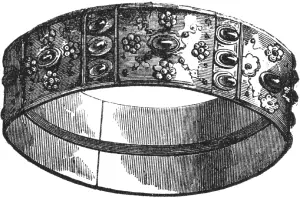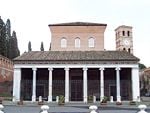Pope Pelagius II
| Saint Pelagius II | |
|---|---|
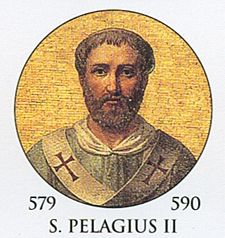
| |
| Birth name | Pelagius |
| Papacy began | 579 |
| Papacy ended | 590 |
| Predecessor | Benedict I |
| Successor | Gregory I |
| Born | ??? Rome, Italy |
| Died | 590 Rome, Italy |
| Other popes named Pelagius | |
Pope Pelagius II was pope from 579 to 590. His papacy was much troubled by difficulties with the Lombards and the increasingly ineffectual alliance between Rome and Constantinople. During his reign the schism of the Three Chapters came to an end in several northern Italian cities, but his resorting to force in other areas resulted in the increased alienation of the schismatics.
Threatened by a Lombard blockade, Pelagius II sent the future Pope Gregory I, then a deacon, to Constantinople to seek aid from the Byzantine emperor Tiberius II. This ally proved unwilling or unable to come to the aid of the West, and the pope ultimately turned to the Franks. They invaded Italy and put the Lombards on the defensive, but soon retreated after being bribed by the Lombards, leaving Italy once again vulnerable.
Besides his attempts to end the Three Chapters schism, Pelagius labored to promote the celibacy of the clergy and ordered the construction of the Basilica di San Lorenzo fuori le Mura. He also refused to recognize the patriarch of Constantinople as "Ecumenical Patriarch," leading to renewed hard feelings between Rome and the East. During his reign, the Visigoths of Spain converted to Christianity.
Pelagius fell victim to the plague that devastated Rome at the end of 589.
Biography
Pelagius II was seemingly a native of Rome, but of Gothic descent rather than Roman. His father's name was Winigild.
Pelagius II was elected to succeed Benedict I when the Lombards were besieging Rome, but his consecration was delayed in the hope of securing the confirmation of the election by the emperor, Tiberius II, in Constantinople. Before this could happen, however, the blockade of Rome by the Lombards and their control of the great thoroughfares proved effective. Four months after his election, Pelagius was consecrated on November 26, 579.
Politically, Pelagius II's most important acts have to do with relations between Rome and the Lombards, in which both Constantinople and the Franks played an important part. Theologically, the most important acts of Pelagius have to do with the northern Italian schism of the Three Chapters.
Relations with the Lombards
Due in large part to Pelagius II's influence, the Lombards at length drew off from the neighborhood of Rome. Monetary gifts from himself and the new emperor, Maurice, seem to have been the most significant factor in their decision to withdraw. After this, Pelagius immediately sent an embassy to Constantinople to explain the circumstances of his election without imperial approval and to ask that additional support be sent to save Rome from the continued threat from the "barbarians."
However, not very much in the way of help for Italy was forthcoming, since the Eastern Roman Empire's finances were largely exhausted by wars with the resurgent Persia. Emperor Maurice (c. 584) later sent a new official to Italy with the title of exarch, who was given combined civil and military authority over the whole peninsula. However, when he came to the capital at Ravenna, this new functionary brought with him an insufficient military force. Meanwhile both emperor and pope had turned toward another "barbarian" tribe, the Franks, for salvation from the Lombard military threat.
Toward the beginning of his pontificate (Oct., 580 or 581) Pelagius wrote to Aunacharius (or Aunarius), bishop of Auxerre, a man of great influence with the various Frankish kings, and begged him to urge the Franks to come to the assistance of Rome. The Franks had become Christians and though their ways were still "uncivilized" in other matters, they seemed now to constitute the best hope against the Lombard threat. "We believe," Pelagius wrote, "that it has been brought about by a special dispensation of Divine Providence, that the Frankish princes should profess the orthodox faith; like the Roman Emperors, in order that they may help this city... Persuade them with all earnestness to keep from any friendship and alliance with our most unspeakable enemies, the Lombards."
Eventually, either the prayers of Pelagius or the political arts of the emperor—or perhaps a combination of the two—induced the Franks to attack the Lombards in Italy. However, their zeal for the papal and/or imperial cause was soon exhausted, and they allowed themselves to be bribed by the Lombards to retire from the peninsula. The distress of the Italians, once again vulnerable to the Lombards, deepened.
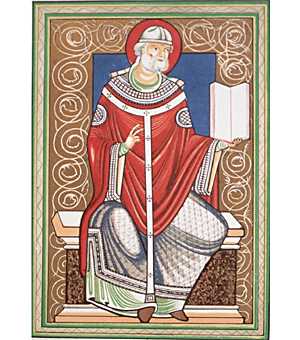
Pelagius had already sent to Constantinople the ablest of his clergy, the deacon Gregory (afterwards Pope Gregory I) the Great as his nuncio. The deacon had been commissioned to haunt the imperial palace day and night, never to be absent from it for an hour, and to strain every nerve to induce the emperor to send help to Rome. Pelagius now dispatched to Gregory letter after letter urging him to increase his efforts on Rome's behalf. He also implored the new exarch at Ravenna, Decius (584), to aid Rome. Decius replied that he was unable to protect the exarchate itself, let alone Rome.
Failing to get help from Ravenna, Pelagius II sent a fresh embassy to Constantinople and exhorted Gregory to combine forces with this delegation in endeavoring to obtain the desired help. "Here," he wrote, "we are in such straits that unless God moves the heart of the emperor to have pity on us, and send us a Master of the soldiery (magister militum) and a duke, we shall be entirely at the mercy of our enemies, as most of the district round Rome is without protection; and the army of these most unspeakable people will take possession of the places still held for the empire."
Though no imperial troops came to Rome, the exarch finally succeeded in concluding a truce with the Lombards.
The Three Chapters schism
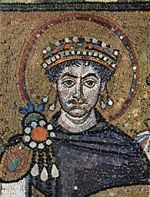
Taking advantage of this peace, Pelagius II turned his attention to putting an end to the schism caused in Italy by the condemnation of the Three Chapters by popes Vigilius and Pelagius I. These popes had capitulated under pressure to the wishes of Emperor Justinian I that they anathematize the supposedly Nestorian writings known as the Three Chapters and endorse the canons of the Second Council of Constantinople, also known as the Fifth Ecumenical Council. Western Christians not only resented this imperial heavy-handedness, but considered the papal acquiescence to Justinian to be an appeasement of the Monophysite heresy, which was still a major force in the East. Northern Italy broke into open schism by refusing to condemn the Three Chapters and breaking off communion with Pelagius I, whom it considered now to be a an imperial agent rather than the vicar of Christ.
The bishops of Aquileia, Milan, and of the Istrian peninsula all had refused to condemn the Three Chapters, arguing that to do so would be to betray Chalcedon. These bishoprics and their territories were soon to become subjects of the Lombards in 568. They were able to maintain their dissent largely because they were beyond the military reach of the Byzantine exarch at Ravenna, who enforced the imperial/papal religious policy.
The schism at Aquileia ended relatively early. Around 581, the Bishop of Milan, Laurence, became dependent upon the Byzantines for support, and he consequently subscribed to the condemnation of the Three Chapters. This left Istria—the triangular peninsula that today forms part of Croatia and Slovenia—still in schism, along with the important northwestern Italian city of Grado.
Pelagius II now recalled deacon Gregory from Constantinople. From Rome, Gregory assisted the pope in the correspondence which was initiated with Bishop Elias of Grado and the churches of Istria. In successive letters the pope bade these churches to remember that the "faith of Peter" could not be crushed nor changed. He insisted on a fact which the northerners had come to doubt: that faith of the Roman church was the faith of the Council of Chalcedon, as well as of the first three general councils. Acceptance of the fifth general council, namely the Second Council of Constantinople in which the Three Chapters were condemned, in no way contracted the canons of Chalcedon, which clearly rejected both Monophysitism and Nestorianism. In highly emotional terms, he exhorted the churches to once again commit themselves to the sacred principle of ecclesiastical unity, which must not be broken "for the sake of superfluous questions and of defending (the) heretical (three) chapters."
These were essentially the same arguments put forth by the pope's namesake, Pelagius I, who, before becoming pope, had actually written in defense of the Three Chapters, changing his mind only after being imprisoned by Justinian. Pelagius II's words, touching though they might be, were thus lost upon the schismatics. Even less efficacious was the violence of Exarch Smaragdus, exerted at Pelagius II's behest, who seized Bishop Severus of Grado, Elias' successor, and forcibly compelled him to enter into communion with the "orthodox" bishop John of Ravenna (588). However, as soon as Severus returned to his see, he repudiated what he had done, and the schism continued for some 200 years longer.
Promotion of clerical celibacy
Pelagius II was one of the popes who labored to promote the celibacy of the clergy. One of the issues in clerical celibacy relates to the attitude of the church, especially in the West, toward human sexuality. The now predominant doctrine of Original Sin promoted by Augustine of Hippo held that sexual union transmits sin and should be avoided except for the purpose or procreation. Even this "parental duty," Augustine said, involves "a passion that makes everyone ashamed." (City of God 14.18)
Another issue involved the belief that having children increased the temptation of a priest or bishop to amass wealth and power. Unlike the time before Christianity had become the favored religion of the Roman Empire, a clerical position could now involve considerable prestige and privilege. By imposing celibacy on the clergy, the popes and church councils intended to lessen the temptation to create clerical dynasties passed on from father to son or to amass wealth which could be handed down to one's heirs. The purpose of priestly celibacy in this sense parallels that of more ancient rulers using eunuchs as local governors or military commanders.
Indeed, several previous popes had been the children of popes themselves, although they were born before their fathers had become bishops, priests or deacons. In the East, Emperor Justinian I (died 565) forbade "any one to be ordained bishop who has children or grandchildren." Pelagius II issued such stringent regulations on this matter with regard to the subdeacons in the island of Sicily that his successor, Gregory I, himself also a promoter of priestly celibacy, thought them too strict, and modified them to some extent.
Other actions
Pelagius also protested against the assumption of the title "Ecumenical" by the patriarch of Constantinople. Emperor Maurice supported the patriarch, and the controversy between the eastern and western churches was exacerbated by Pelagius’ refusal to accept the canons council a subsequent synod and Constantinople
Among Pelagius other works may be noted his adorning of St. Peter's, turning his own house into a hospital for the poor, and rebuilding the Church of Saint Laurence outside the walls, where may still be seen a mosaic (probably commissioned by Pelagius) depicting the saint as standing on the right side of Christ. Pelagius II fell victim to the terrible plague that devastated Rome at the end of 589 and was buried in St. Peter's.
Legacy
Pelagius II's most important legacy was his recognition of the talents of the deacon Gregory, whom he utilized to good effect as a diplomat and secretary. This training would stand Gregory in good stead when he became pope and earned the title of Gregory the Great.
Pelagius' turning to the Franks for protection was also an important act with lasting implications. Even though they proved an unreliable ally in this case, the Franks would play a major role in the future of Christian Europe. With the Eastern Roman Empire in decline and the rise of Islam soon to come, from this point onward, the future of Christianity lay not to the East and Constantinople, but to the rising empire of the Franks and other "barbarian" tribes in the West.
Finally, while his rejection of the title of Ecumenical Patriarch for the patriarch of Constantinople is understandable—since it seemingly gave this bishop more universal authority than the bishop of Rome himself—the titular controversy that ensued constituted one more sad chapter in the relations between Rome and Constantinople, leading ultimately to the Great Schism of 1054.
| Roman Catholic Popes | ||
|---|---|---|
| Preceded by: Benedict I |
Bishop of Rome 579–590 |
Succeeded by: Gregory I |
ReferencesISBN links support NWE through referral fees
- Duffy, Eamon. Saints and Sinners: A History of the Popes. New Haven: Yale University Press, 2002. ISBN 0300091656
- Dvornik, Francis. Byzantium and the Roman Primacy. New York: Fordham University Press, 1966. OCLC 386269
- Frend, W. H. C. The Rise of the Monophysite Movement. James Clarke Company, 2008. ISBN 978-0227172414
- Loomis, Louise Ropes. The Book of the Popes (Liber Pontificalis): To the Pontificate of Gregory I. Merchantville N.J.: Evolution Pub, 2006. ISBN 9781889758862
- Maxwell-Stuart, P. G. Chronicle of the Popes: The Reign-by-Reign Record of the Papacy from St. Peter to the Present. New York, N.Y.: Thames and Hudson, 1997. ISBN 0500017980.
This article incorporates text from the public-domain Catholic Encyclopedia of 1913.
| ||||||||||||||||
Credits
New World Encyclopedia writers and editors rewrote and completed the Wikipedia article in accordance with New World Encyclopedia standards. This article abides by terms of the Creative Commons CC-by-sa 3.0 License (CC-by-sa), which may be used and disseminated with proper attribution. Credit is due under the terms of this license that can reference both the New World Encyclopedia contributors and the selfless volunteer contributors of the Wikimedia Foundation. To cite this article click here for a list of acceptable citing formats.The history of earlier contributions by wikipedians is accessible to researchers here:
The history of this article since it was imported to New World Encyclopedia:
Note: Some restrictions may apply to use of individual images which are separately licensed.
